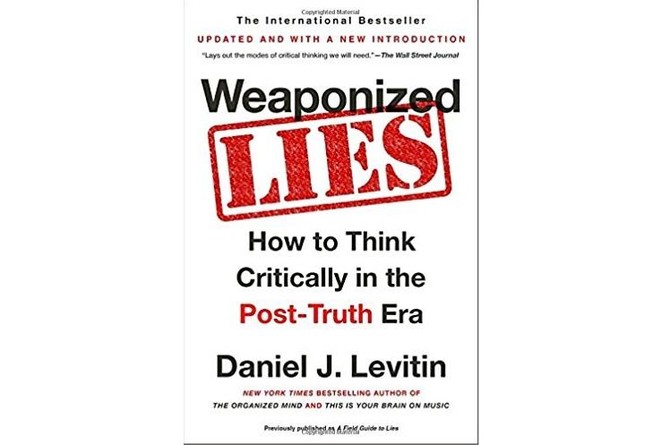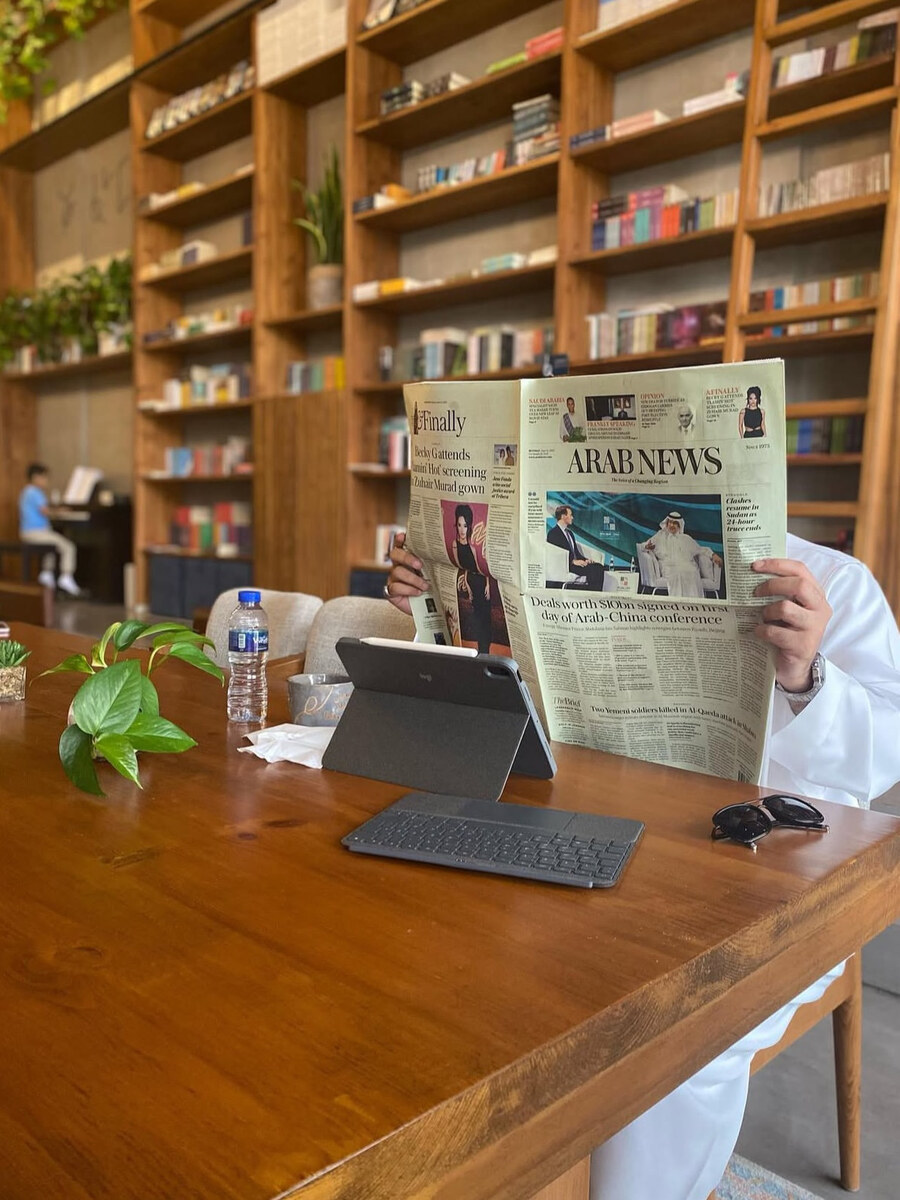The term “fake news” was chosen as the phrase of the year in 2017 by Collins Dictionary. False stories that appear to be true have helped to undermine society’s trust in news reporting.
On Jan. 10, President Emmanuel Macron announced that France would be the first country to shut down alleged fake news websites and social media accounts if they were suspected of interfering with democratic elections.
Dishonest outlets should not be allowed to influence public opinion. But people need to be trained to become critical thinkers. A Stanford University study tested 7,800 students for 18 months and discovered that young people are unable to recognize high-quality news from lies.
Lies have become weapons and they are difficult to detect. “Misinformation is devilishly entwined on the Internet with real information, making the two difficult to separate,” says Daniel Levitin, a neuroscientist, cognitive psychologist and bestselling author.
Misinformation passes from one person to another through a range of social media and spreads around the world. However, governments and powerful individuals have used disinformation to serve their own interests for millennia.
This book shows us, on one hand, how to detect problems with data we encounter on the Internet and, on the other, gives us the tools to think critically, evaluate facts and reach evidence-based conclusions. Students are reading increasingly less. Consequently, “children are not developing good learning habits, they’re not interested in bettering themselves, and they are not intellectually engaged,” writes Levitin.
Most of what we know was either told to us or we read about it. In other words we rely on people with expertise. We should analyze the claims we encounter the same way we analyze statistics and graphs. This is taught in law and journalism schools, and sometimes in business schools and graduate science programs, but rarely to those who need it most.
To reach the truth can be quite an ordeal and the human brain often makes decisions based on emotional considerations. “Even the smartest of us can be fooled. Steve Jobs delayed treatment for his pancreatic cancer while he followed the advice (given in books and websites) that a change in diet could provide a cure. By the time he realized the diet wasn’t working the cancer had progressed too far to be treated,” writes Levitin.
Another important factor is to be able to evaluate the reputation and trustworthiness of experts. So many financial authorities make the wrong predictions, while novices or amateurs turn out to be right.
Some sources are more reliable than others: peer-reviewed articles are more accurate than books, and books by major publishers are more reputable than self-published works. Award-winning newspapers such as The New York Times, The Washington Post and The Wall Street Journal gained their reputations by striving to be constantly truthful in their news coverage. These outlets maintain their standards on their websites. The same cannot be said of some other websites, which fail to live up to the same standards.
Another form of misrepresenting the truth is “counterknowledge”, a term coined by Damian Thompson, a British journalist, referring to misinformation packaged to resemble real facts. Examples are claims that the Moon landings and 9/11 terror attacks in the United States never took place. Merely asking the question “What if it is true” helps the fake news to spread.
In the final section of the book, Levitin tackles scientific thinking and “that includes seeing how, with our imperfect human brains, even the most rigorous thinkers can fool themselves”.
Some researchers make up data. They often get away with it because their peers are not on their guard. A case of fraud was discovered in 2015 when Dong-Pyou Han, a former biomedical scientist at Iowa State University, was found guilty of fabricating and falsifying data about a potential vaccine. He lost his job at the university and was sentenced to almost five years in prison.
The idea that the measles, mumps and rubella (MMR) vaccine may cause autism was propagated by Andrew Wakefield in an article with falsified data that has now been retracted and yet, even now, millions of people continue to believe the link.
The Internet is a powerful democratizing force that allows everyone to express their opinion and enjoy instant access to the world’s information. But critical thinking and updating our knowledge are needed as new information come in.
“We’re far better off knowing a moderate number of things with certainty than many things that might not be so. True knowledge simplifies our lives, helping us to make choices that increase our happiness and save time,” says Levitin.
“Weaponized Lies” warns us about the logical fallacies, the insidious lies and fake news found on the Internet. It also gives us a set of intellectual tools to uncover inaccurate data, deceptive information, fallacious reports and, finally, differentiate between the real, the unreal and even the surreal.
Book Review: Re-thinking strategy in the fight against fake news
Book Review: Re-thinking strategy in the fight against fake news

What We Are Reading Today: ‘The Machines of Evolution and the Scope of Meaning’

Author: Gary Tomlinson
In this groundbreaking book, Gary Tomlinson defines a middle path. Combining emergent thinking about evolution, new research on animal behaviors, and theories of information and signs, he tracks meaning far out into the animal world. At the same time he discerns limits to its scope and identifies innumerable life forms, including many animals and all other organisms, that make no meanings at all.
Riyadh’s literary havens: Where coffee meets the love of books

- City’s book cafes offer serene spaces for quiet reflection
- Carefully curated selections of Arabic and English titles on offer
RIYADH: Riyadh’s cultural landscape is undergoing a quiet transformation, where the love of coffee meets the timeless allure of literature.
Book cafes are carving out a niche as spaces where readers, thinkers, and coffee enthusiasts converge.
These havens of creativity and reflection offer retreats for the mind and soul, providing a sense of community in an increasingly fast-paced world.

The Book Club: Where stories find their home
Nestled in the Al-Yasmin district, The Book Club is a tranquil retreat for bibliophiles, particularly those passionate about Arabic literature.
Its shelves brim with carefully curated Arabic titles, from classics to contemporary gems, complemented by a modest selection of English books.
HIGHLIGHTS
• In Riyadh’s Al-Narjis district, Wathbah Coffee and Book’s floor-to-ceiling bookshelves, vintage-inspired decor, and intimate corners create a haven for readers and thinkers alike.
• Coffee Trees, tucked away in the Al-Rayan district, offers a sanctuary that blends greenery with literary charm.
The minimalist interior, adorned with soft lighting and intimate reading nooks, creates an atmosphere conducive to focus and relaxation.
What sets The Book Club apart is its browsing policy. Visitors are welcome to skim books for three minutes before deciding to purchase, with additional purchases granting extended reading time.

During Arab News’ visit, the cafe hosted a stimulating talk with Saad Al-Bazai, titled, “Historical Fiction: Why Do They Believe in the Imagined?”
Al-Bazai told Arab News: “These gatherings bring together a diverse audience and provide them with the opportunity to meet researchers.
“This undoubtedly supports cultural life as it creates a platform for dialogue that differs from social media platforms — it is vibrant, direct, and involves personal presence.”
Sophia: A library, a cafe, and a place to connect
Sophia has become a cornerstone of Riyadh’s literary scene, acting as a hub for knowledge, creativity, and meaningful connections.
Its towering wooden shelves are filled with a rich collection of Arabic and English books, carefully curated to cater to a diverse audience.

Beyond being a library, Sophia also serves as a publishing house, amplifying the voices of local and regional authors, bringing their stories to the forefront.
What sets Sophia apart is its dedication to fostering intellectual growth and cultural exchange.
The space regularly hosts book launches, discussion panels, and thought-provoking dialogue sessions that bring together writers, readers, and thinkers from various backgrounds.
The inviting ambiance, complete with warm lighting and cozy seating, creates the perfect backdrop for these events, making each visit an enriching experience.
Aminah Al-Hassani, a loyal visitor, captured the essence of Sophia. She said: “The place is calm and serene, and it has never let me down with a bad book.
“Every book I’ve read here has been better than the last. Their selections are beautiful, and the events they organize are always beneficial and enjoyable.”

Coffee Trees: A green sanctuary
Coffee Trees, tucked away in the Al-Rayan district, offers a sanctuary that blends greenery with literary charm. The cafe’s lush decor, accentuated by vibrant plants and natural elements, transforms the space into a botanical retreat.
Though its library is modest, the curated selection of books is perfectly aligned with the cafe’s serene ambiance.
Patrons often find themselves lost in thought or pages, surrounded by the aroma of ethically sourced, expertly brewed coffee.
Whether it’s the tranquil environment or the commitment to sustainability, Coffee Trees is a favorite escape for those seeking a moment of calm in the city.

Wathbah Coffee & Book: Where timeless charm meets literature
In Al-Narjis district, Wathbah Coffee & Book exudes intellectual allure. Its floor-to-ceiling bookshelves, vintage-inspired decor, and intimate corners create a haven for readers and thinkers alike.
The carefully selected collection spans genres and eras, ensuring there’s something for everyone.
Wathbah’s ambiance is perfect for quiet reading, reflective conversations, or simply soaking in its aesthetic beauty.
As Sara Al-Ebraheem, a loyal patron, said: “There’s a certain magic in time spent in the company of good books, with a perfectly brewed coffee.”

Ons Coffee Roasters: Where simplicity meets serenity
Ons Coffee Roasters offers a minimalist haven for those who crave peace and simplicity. Its clean design, complemented by tasteful art and cozy seating, creates a calm environment perfect for unwinding.
While its library may be small, the books displayed are thoughtfully chosen to inspire reflection and curiosity.
Ons Coffee Roasters is as much about quality as it is about serenity. Its expertly brewed coffee elevates the experience, making it an ideal retreat for anyone seeking a quiet corner in Riyadh.

A cultural renaissance in Riyadh
The emerging popularity of book cafes is providing spaces where literature, art, and community thrive. The cafes cater to a growing audience of residents and visitors who value meaningful connections in an increasingly digital world.
What We Are Reading Today: ‘Mathematical Methods for Geophysics and Space Physics’ by William I. Newman

Graduate students in the natural sciences—including not only geophysics and space physics but also atmospheric and planetary physics, ocean sciences, and astronomy—need a broad-based mathematical toolbox to facilitate their research.
In addition, they need to survey a wider array of mathematical methods that, while outside their particular areas of expertise, are important in related ones.
This authoritative and accessible book covers everything from the elements of vector and tensor analysis to ordinary differential equations, special functions, and chaos and fractals.
What We Are Reading Today: ‘The Owl and the Nightingale’

Author: SIMON ARMITAGE
“The Owl and the Nightingale,” one of the earliest literary works in Middle English, is a lively, anonymous comic poem about two birds who embark on a war of words in a wood, with a nearby poet reporting their argument in rhyming couplets, line by line and blow by blow.
In this engaging and energetic verse translation, Simon Armitage captures the verve and humor of this dramatic tale with all the cut and thrust of the original.
International Prize for Arabic Fiction announces 2025 longlist

DUBAI: The longlist for the 2025 International Prize for Arabic Fiction has been revealed, with 16 novels in the running for the $50,000 award, sponsored by the Abu Dhabi Arabic Language Centre.
While works from Bahrain and Mauritania have made the list for the first time, other nominated novels come from Egypt, Syria, Lebanon, Algeria, Iraq and the UAE.
The longlist has been chosen from a total of 124 submissions by a panel of five judges chaired by Egyptian academic Mona Baker. Joining her on the panel are Moroccan academic and critic Said Bengrad, Emirati critic and academic Maryam Al-Hashimi, Lebanese researcher and academic Bilal Orfali, and Finnish translator Sampsa Peltonen.
In a statement, Baker said, “This year’s longlist is remarkable in its diversity of both theme and literary form. Some novels address women’s struggles to achieve their dreams in a patriarchal society that prevents them from living fulfilled lives. Others offer a nuanced portrait of religious and sectarian worlds, where extremism and dogma contrast with human empathy and understanding.
“There are a number of historical novels on the list which deal with both the recent and more distant past, such as the Abbasid era, or the Inquisition and persecution of Muslims in Andalusia. There are also semi-autobiographical books, and others which read like detective stories.
“Repressive regimes and their power to crush the hopes and lives of ordinary people are also explored; some novelists paint a stark picture of this reality, while others employ sarcasm and humour, rendering these difficult topics more accessible for the reader.”
The 2025 International Prize for Arabic Fiction longlist:
Aqeel Almusawi’s “The Weepers” (Bahrain)
Inam Bioud’s “Houwariya” (Algeria)
Rashid Al-Daif’s “What Zeina Saw and What She Didn’t” (Lebanon)
Ahmed Fal Al-Din’s “Danshmand” (Mauritania)
Jan Dost’s “The French Prisoner” (Syria)
Sausan Jamil Hasan’s “Heiress of the Keys” (Syria)
Iman Humaydan’s “Songs for the Darkness” (Lebanon)
Azher Jirjees “The Valley of the Butterflies” (Iraq)
Hasan Kamal’s “The Stolen Novel” (Egypt)
Taissier Khalaf’s “The Andalusian Messiah” (Syria)
Ahmed Al-Malawany’s “Happy Dreams” (Egypt)
Mohamed Samir Nada’s “The Prayer of Anxiety” (Egypt)
Nadia Najar’s “The Touch of Light” (United Arab Emirates)
Haneen Al-Sayegh’s “The Women’s Charter” (Lebanon)
Sumar Shihada’s “My Life Has Just Begun” (Syria)
Ayman Ragab Taher’s “The Lamplighter” (Egypt)


















